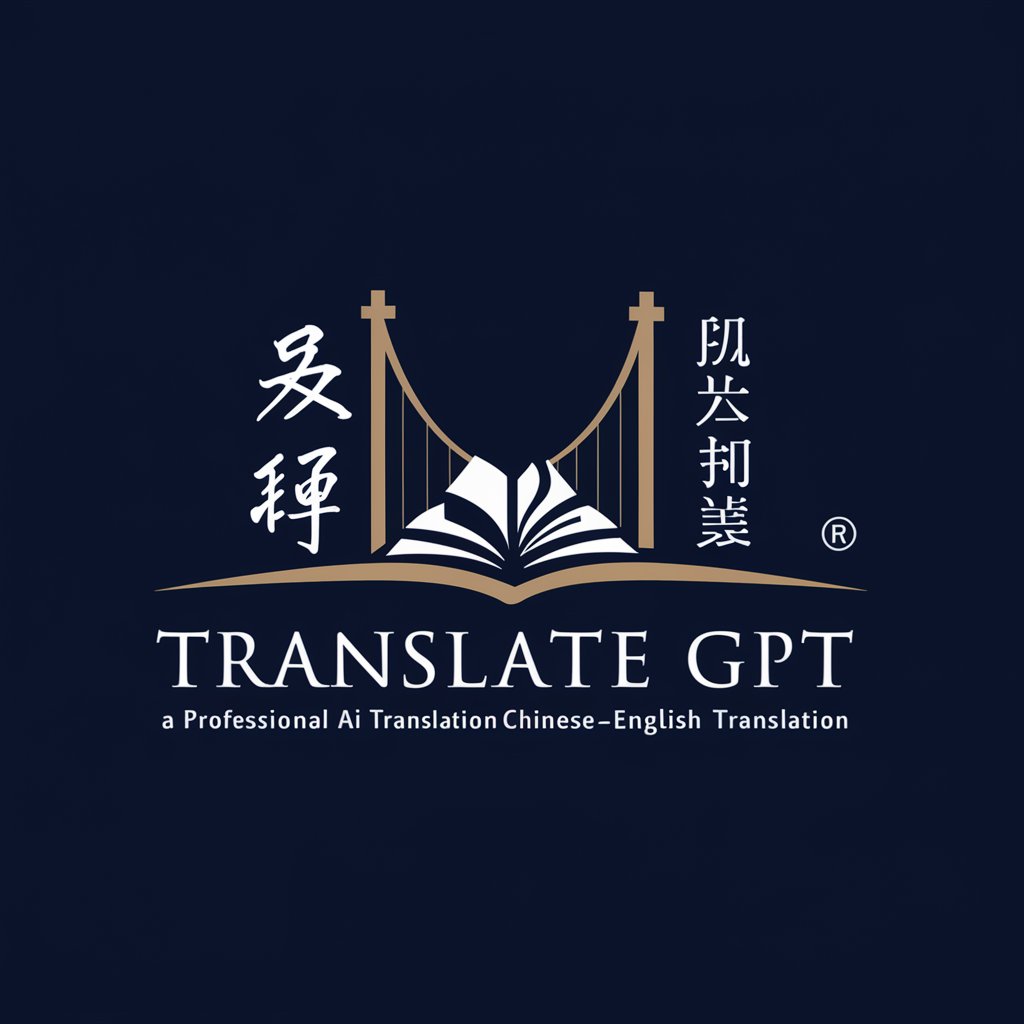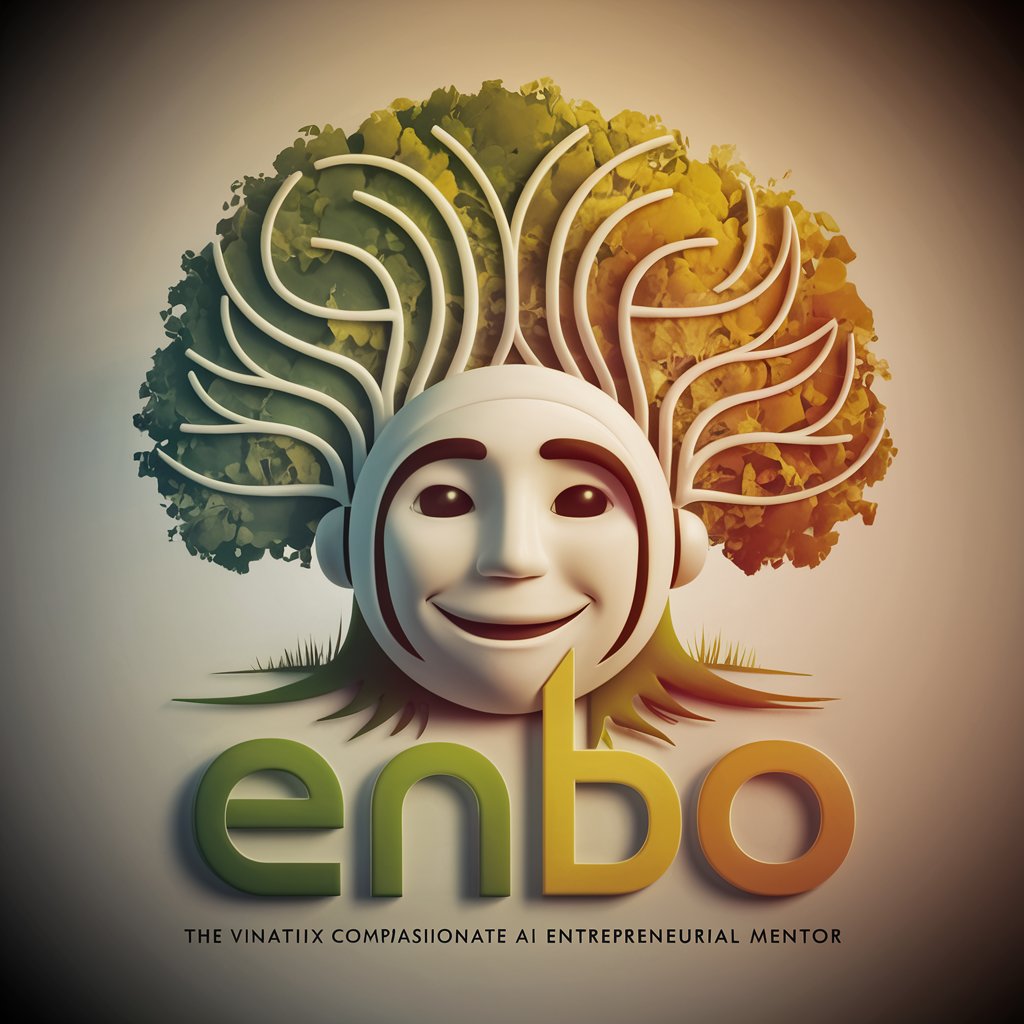
Translate GPT (Chinese to English Translation)-Chinese to English Translation
AI-powered Chinese→English, faithful and fluent.

Translate GPT will help you translate from Chinese to English for any text.
Translate from Chinese to English
Get Embed Code
Introduction to Translate GPT (Translate GPT overviewChinese to English Translation)
Translate GPT is a language model designed specifically to translate Chinese text into fluent and contextually accurate English. Unlike conventional translation tools that rely heavily on rule-based systems, Translate GPT uses deep learning models, trained on vast amounts of multilingual data, to understand both the source and target languages' complexities. The model is designed to capture nuances such as idiomatic expressions, cultural context, tone, and other subtle aspects that a standard translation tool might miss. For example, in the sentence '我吃了午餐' (I ate lunch), a typical machine translation might render it as 'I ate lunch', which is straightforward. However, Translate GPT takes into account whether the phrase is formal or casual, how it fits within a broader conversation, and adjusts the output accordingly to ensure it sounds natural in English, such as 'I’ve had lunch.'
Main Functions of Translate GPT (Chinese to English Translation)
Context-aware translation
Example
The phraseTranslate GPT functions '我在家' could be translated as 'I am at home' or 'I am in my house' depending on context.
Scenario
In a business meeting, the phrase might be translated as 'I am at home' to reflect a more personal context (e.g., discussing remote work), whereas a more formal or literal translation would use 'I am in my house' for a discussion about real estate or architecture.
Tone adaptation
Example
'感谢' can be translated as 'thank you' or 'thanks,' depending on the level of formality in the conversation.
Scenario
In a formal email, '感谢' would be translated as 'I sincerely appreciate it,' whereas in a casual conversation, 'thanks' might be more appropriate.
Idiomatic expressions and cultural context understanding
Example
'画龙点睛' directly translates to 'paint the dragon and dot its eyes,' but the English equivalent might be 'the finishing touch.'
Scenario
In a business setting, when a Chinese colleague uses '画龙点睛,' Translate GPT ensures the translation is contextualized to mean 'adding the final touch' rather than providing a literal but nonsensical translation.
Ideal Users of Translate GPT (Chinese to English Translation)
International Businesses and Corporations
Companies with Chinese-speaking clients, partners, or employees benefit from Translate GPT's ability to accurately convey business correspondence, reports, contracts, and other professional documents. The nuanced translation ensures clear communication, reducing the risk of misinterpretation and cultural misunderstandings in high-stakes business negotiations.
Language Learners and Educators
Students and teachers of Chinese or English will find Translate GPT valuable for improving their understanding of the languages. It offers examples of how native speakers might phrase sentences in both languages, helping learners bridge gaps in their knowledge of vocabulary, grammar, and idiomatic expressions.
Content Creators and Translators
Authors, journalists, and other content creators who translate articles, books, or media content from Chinese to English can use Translate GPT to preserve meaning, tone, and style. This is particularly useful for ensuring translations maintain the cultural essence and appeal to a global audience.
How to Use Translate GPT (Chinese to English Translation)
Visit aichatonline.org for a free trial without login, also no need for ChatGPT Plus.
Open the site and launch Translate GPT directly—no account or payment required for the trial.
Prepare your input
Provide Chinese text (Simplified or Traditional). Keep original paragraph breaks. Avoid mixing instructions inside the text. Typical uses: light novels, webfiction, subtitles, research excerpts, business documents.
Paste text and optional glossary
Paste the Chinese passage. Optionally include a brief English glossary for names/terms (e.g., name choices) before the text; the translation will follow it while outputting translation only.
Translate and review
Submit to receive fluent, context-aware English. Check pinyin/phonetic names, idioms rendered naturally, and preserved line breaks. Adjust glossary if needed and re-run.
Tips for best results
For long chapters, send in chunks (2–4k chars) with 1–2 sentence overlap. Provide recurring term preferences early. Expect no added commentary;Translate GPT Guide only the translation is returned.
Try other advanced and practical GPTs
Veeam Backup Expert Helper Bot
AI-powered Veeam Backup Helper Bot

cupcake v0 game 2: are you smarter than a degen
AI-powered trivia game for knowledge seekers

Blog Post / Article Image Generator + Alt Text
AI-driven images with SEO-friendly alt text.

AHK v2 Wizard
AI-powered AutoHotkey v2 scripting.

Crossword Generator
AI-powered crosswords, customized and printable.

Enbo Lite: Your Personal Entrepreneurship Mentor
AI-powered mentor to start and scale

Convo-AI
AI-powered assistant for creative tasks.

Linear Algebra
AI-powered linear algebra tutor and solver

Algebra
AI-powered Algebra solver for efficient learning

Asistente de Diseño de Diapositivas IA
Create stunning slides with AI ease.

Cat memo(猫ミーム)
AI‑powered storyboarder for viral cat memes.

Code Whisperer
AI‑powered code guidance, debugging, and design.

- Academic Research
- Subtitles
- Light Novels
- Webfiction
- Business Docs
Translate GPT: Detailed Q&A
What exactly does Translate GPT do?
It converts Chinese text into natural, faithful English optimized for fiction and prose. It preserves paragraph breaks, renders names in pinyin/phonetics, localizes idioms, and returns translation only—no extra notes.
How are names, honorifics, and culture-specific terms handled?
Names default to pinyin/phonetic forms. Honorifics and set phrases are rendered into natural English equivalents when appropriate. Provide a short glossary to lock preferred spellings or term choices.
Can it handle internet slang, memes, or wuxia/xianxia vocabulary?
Yes. It interprets slang and genre terms from context, choosing idiomatic English or preserving key terms where they function as proper nouns, maintaining consistent renderings across the passage.
How should I submit long or serialized chapters?
Send in sequential chunks of 2–4k characters with brief overlap to keep continuity. Repeat the last 1–2 sentences at the start of the next chunk. The output preserves formatting without merging paragraphs.
What formatting and variants are supported?
Works with Simplified and Traditional Chinese, mixed punctuation, dialogue, and emojis. It preserves line breaks and adapts punctuation to standard English. Input is plain text pasted into the chat.






